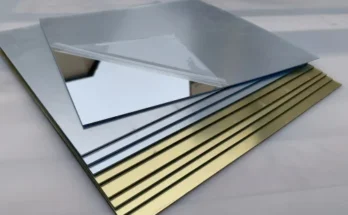Have you ever wondered why aluminium is the preferred engineering material for many applications? It’s because of its properties, such as durability, malleability, ductility, and corrosion resistance. You will undoubtedly see a gleaming array of aluminium-based machinery and instruments around you.
There are several benefits to using aluminium in industrial plants. These benefits are essential contributing factors to cost-effectiveness, reliability, and durability. The properties of aluminium make it a useful metal for different applications, which is why you encounter several aluminium-based products daily. We look at why using aluminium is the best option for industries.
1. Aluminium has High Corrosion Resistance
Aluminium performs significantly better than other metals when exposed to harsh chemicals like form acid or ammonia. When exposed to air, a thin oxidized film forms on the surface, preventing corrosion. As a result of the corrosion-resistance feature, it is used in aluminium framing, construction, and household items sales.
Since aluminium is fire-resistant, it is frequently used in construction, transportation, and other areas where a fire risk exists. When you expose aluminium to heat, it doesn’t generate hazardous emissions.
Furthermore, you can use aluminium with highly flammable or explosive substances due to its non-sparkling characteristic. This explains why a gasoline pump nozzle is made from a non-sparkling aluminium alloy.
2. It is infinitely Recyclable Without Loss of Quality
Image source: https://unsplash.com/photos/1PUduknVaF8
Aluminium is 100% recyclable without losing its natural properties. It is the most economical and environmentally friendly material to reduce emissions and boost fuel economy.
Recycling aluminium saves 100 million metric tons of CO2 every year. This is because you only need 5% of the energy to manufacture aluminium from raw materials. In other words, recycling aluminium helps preserve resources and can lower CO2 emissions into the atmosphere.
According to reports, two-thirds of the aluminium produced since commercial production began in 1886 is still in use today. As a result, the aluminium industry comprises a large secondary sector that uses scrap aluminium products to melt and recover metal.
3. It is Stronger than you Would Think
Aluminium has been an ideal material for high-rise buildings due to its strength and durability. Although light and malleable, aluminium is as strong as steel, depending on the alloy and processing technique.
You won’t experience brittle fracture problems with aluminium. Its alloys are especially well suited for low-temperature applications because their strength increases without sacrificing quality at low temperatures.
Aluminium becomes stronger when alloyed with trace amounts of other metals like copper, zinc, magnesium, and silicon. This makes it ideal for transport applications such as trains, airplanes, ships, and cars. The ability to withstand weight is one of the prominent characteristics of aluminium that allows it to be used in automotive manufacturing.
Most of the car’s bodywork is constructed from an aluminium base and other components like rims, chassis, and frames. The good news is that aluminium alloys have various strengths, some stronger than steel.
4. High Finish Ability
Interior designers use aluminium because it’s easy to shape and looks great. It doesn’t require a protective coating for most applications, with a fine surface finish. Some items made from aluminium include lamps, tables, chairs, picture frames, and decorative panels.
This metal is used in packaging as aluminium foil, thanks to its malleability. You can adapt it to the shape of the food in the processing industry. It is also used in cooking utensils without harmful effects due to its non-toxic nature.
It is possible to create different surface textures with aluminium, such as mirror-smooth, matte, and rough. You can apply a wide range of surface finishes when you need additional protection. For example, you can apply paint, lacquer, enamel, electroplate, or laminate coatings when decorating the metal. You can apply a range of finishes to aluminium to enhance its surface trait and alter its appearance.
5. It is one of the Lightest Metals
Aluminium is ideal for architectural applications because it’s strong and lightweight. Because of being lightweight, it is easier to repair buildings with fewer fixings than steel. The lightweight property of aluminium makes it easy to handle when used in factories and construction sites. The material’s light weight also significantly reduces the energy needed to transport and use the product.
Larger aluminium components might be stronger and lighter than the steel equivalent. It’s also used to make lightweight bicycle frames that aren’t as strong as steel or titanium. This makes it easy to deform. Because of its lightweight, aluminium has frequently been used in place of gold, silver, and copper despite its low conductivity.
6. Malleability
Image source: https://unsplash.com/photos/FKBJLu4GSOI
Designers use aluminium in high-rise infrastructures and skyscrapers due to its high malleability and flexibility. It is considered the best material for complex extrusion and tight tolerances. Architects are fond of using aluminium because it can be shaped, bent, and punched.
You can easily form aluminium into other shapes like foil, sheets, rods, tubes, and wires. For example, aluminium can be formed into the desired thickness, ranging from foil, thinner than paper, to rolled aluminium wires and aluminium sheets.
When you apply flexible strength, aluminium can reconfigure its shape and size, which is a big advantage for architects. Furthermore, it exhibits excellent machinability and plasticity when bent, cut, or drawn.
7. It has High Conductivity
Image source: https://unsplash.com/photos/5Wu96pC2qxE
Numerous industries can benefit from aluminium’s excellent heat- and electricity-conducting qualities. It’s a good conductor of both heat and electricity. For example, aluminium is three times as thermally conductive as steel. Due to this property, the metal is commonly used in aircraft and automotive Industries.
It’s also used in the electric vehicle industry due to its high conductivity. Today, aluminium frequently takes the place of copper as a conductive metal. The electrical conductivity of aluminium is roughly 62% of that of copper, but it weighs less than one-third as much. As a result, it conducts electricity about twice as much as copper of the same weight.
Bottom line
Aluminium is unmatched when it comes to its wide range of applications. The advantages of aluminium and its applications are associated with its remarkable properties. Due to its properties, aluminium has many industrial applications. It’s one of the most versatile metals on Earth and is now regarded as one of the ultimate strategic metals. It’s no surprise that aluminium has a wide range of applications. It’s one of the metals that companies people in almost every part of life.




